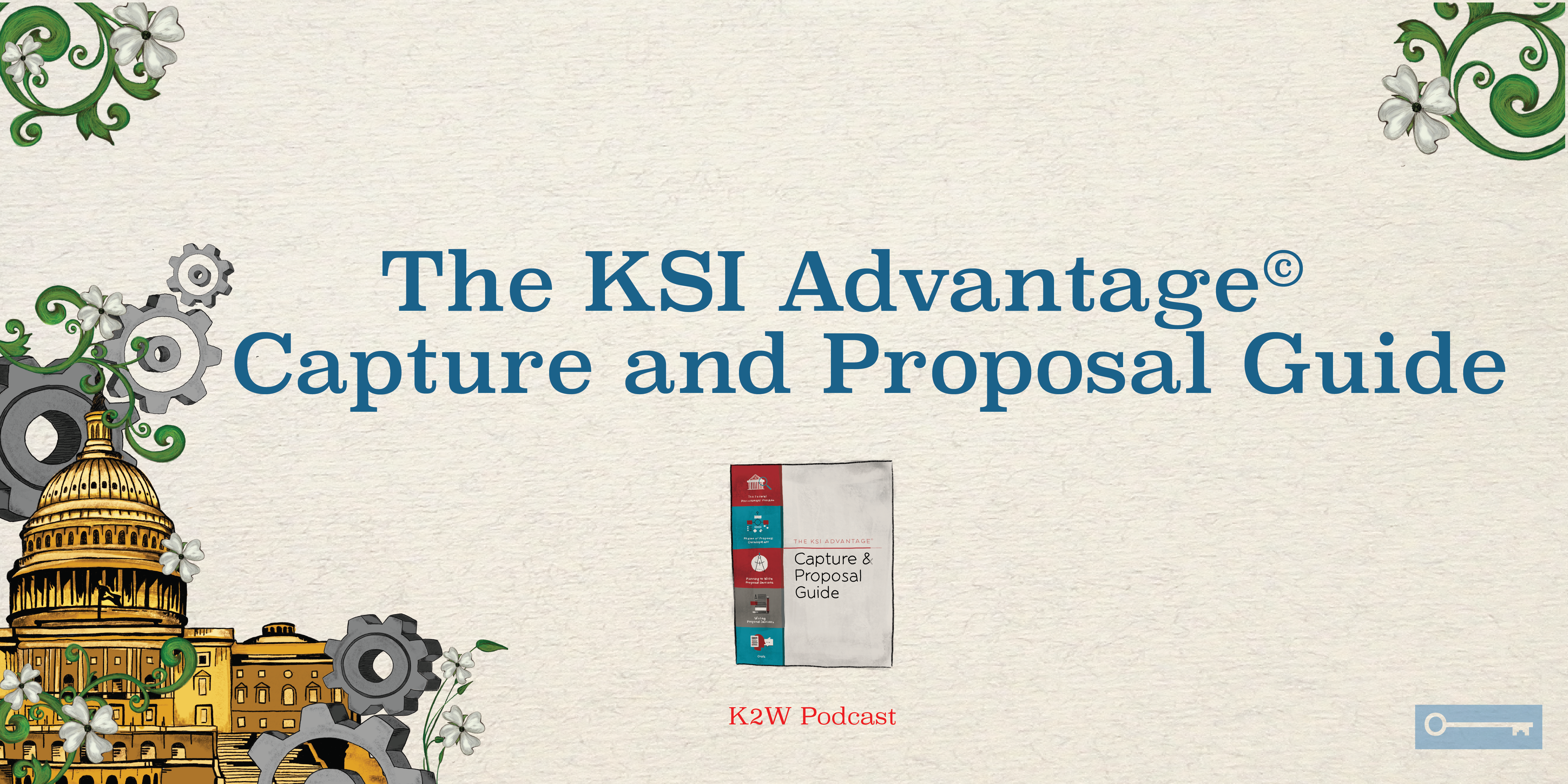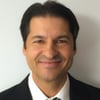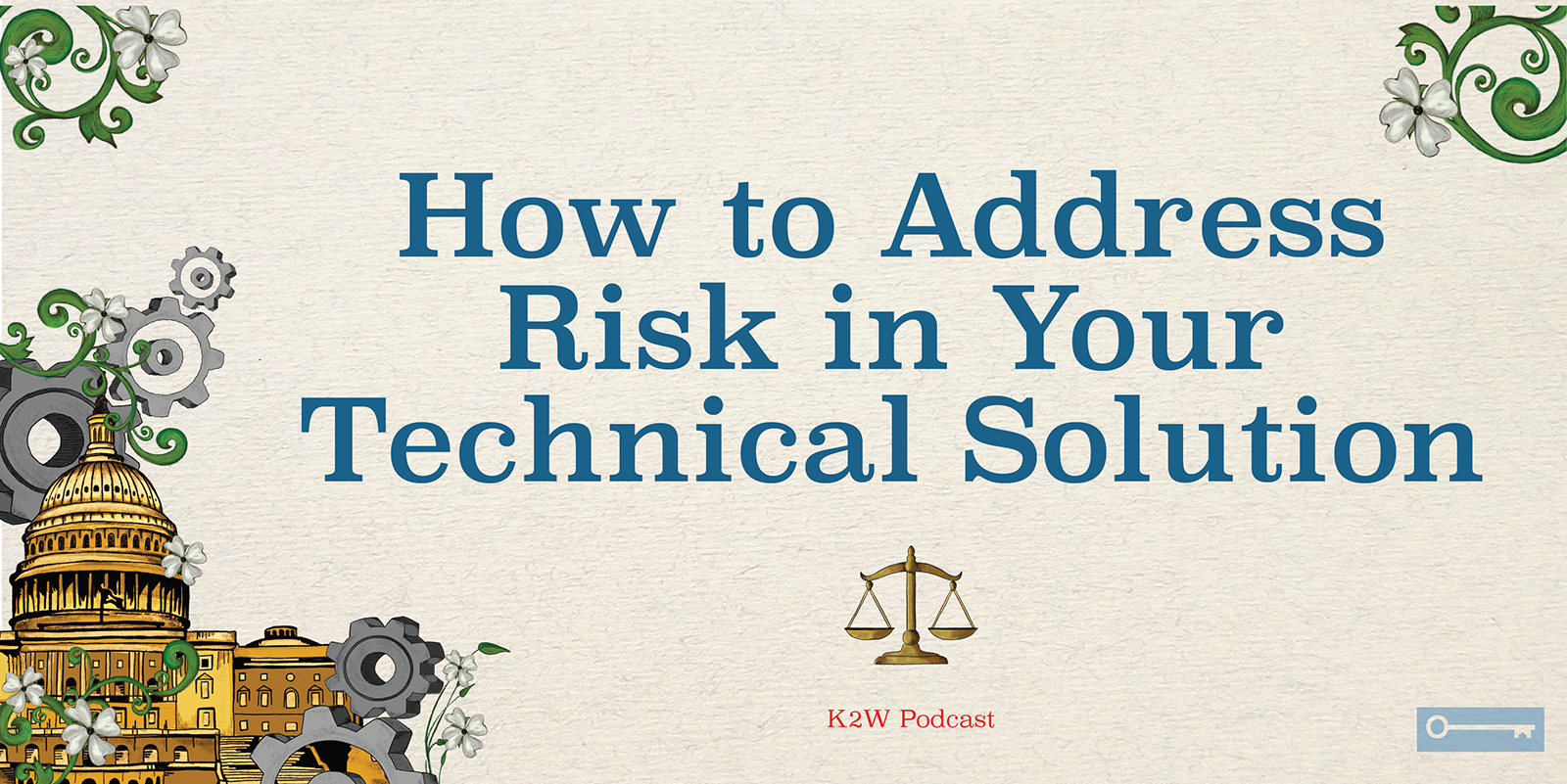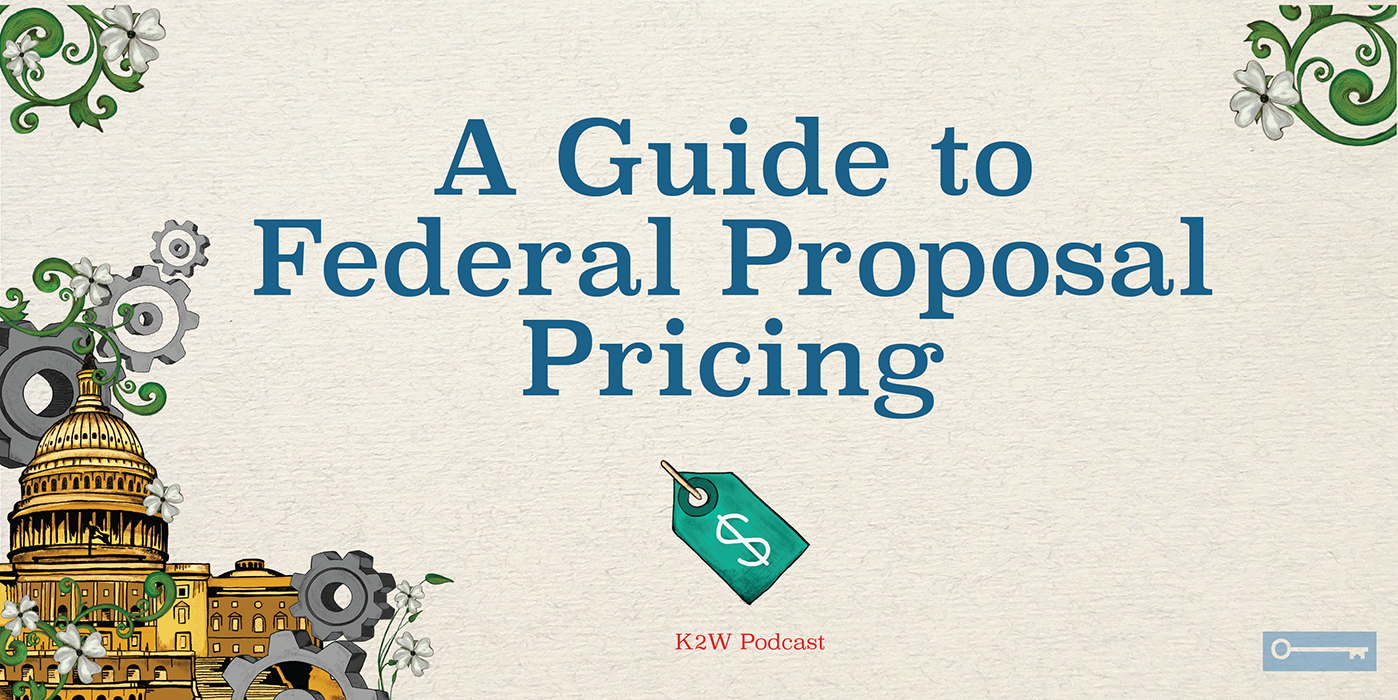
After months of work, we're thrilled to be able to share our top secret project with you, the launch of our KSI Advantage© Capture & Proposal Guide!
We love helping our clients write and manage proposals, but we also want to help others implement effective proposal practices in their organizations.
The KSI Advantage© Guide is a single streamlined manual for both capture and proposals using our proven processes and tools.
In this episode, we share what you can expect from the KSI Advantage© Capture & Proposal Guide.
Guest: Ashley Kayes, Senior Proposal Specialist, AOC Key Solutions
Click the orange play button to listen to the episode. You can also listen on Apple I-Tunes or Soundcloud.
Prefer to read? Here's the transcript.
Ray Thibodeaux:
Welcome to Keys to Winning, a podcast where we talk about government contracting topics such as proposal development, business development, wind strategies, and more. Keys to Winning, produced by AOC Key Solutions, a leading bid and proposal development firm, gives you a chance to learn from leaders and experts in their fields. I'm Raymond Thibodeaux, today's host of Keys to Winning.
Ray Thibodeaux:
I'm really excited about today's guest, Ashley Kayes, who's an APMP practitioner level certified proposal management specialist, who also in the past year has put together a book called the KSI Advantage© Capture & Proposal Guide. It details key solutions, unique processes, techniques, and tools. The book is soon to be available to the public, but we have Ashley here now to give us a glimpse at what's in it. Welcome to the podcast, Ashley.
Ashley Kayes:
Thanks, Ray.
Ray Thibodeaux:
Usually these podcasts are not so self serving. We're not here to toot our own horn, but I think this is something special objectively speaking, and will have a big impact on those in the proposal business or those who want to be in it. Ashley, first, I really applaud you for taking the lead in getting this book into shape, sorting through our sizable database of Key Solutions, standard operating procedures, tools, checklists. What about this project inspired you to take it on or should I say what possessed you to take it on?
Ashley Kayes:
Well, I really wanted the content to be available to a larger audience. In its previous form, much of that material we had was dated and disjointed, but we have some key differentiators that I thought could really be brought forward and with a good overhaul. Our KSI Advantage© Process Guide is flexible, scalable, and streamlined. I'm really excited about the potential this project has for us to better standardize our delivery of services, as well as to help others implement more effective proposal practices in their organization.
Ray Thibodeaux:
Of course, we know there's the Shipley guides, which for years have been widely accepted as the industry standard. What does the KSI Advantage© Guide bring to the table? What about it is different?
Ashley Kayes:
Well, a few things set us apart. Structurally Shipley has separate guides for proposal and capture. A few versions ago Shipley also switch to a more alphabetical encyclopedia like format, and that makes their guide useful as a quick reference, but it's kinda hard to sit down, read it and, get to know how to tackle that proposal.
You almost have to take their training to understand how to tackle an opportunity. With the KSI Capture and Proposal Guide we simplified and distilled our process into a single digestible manual for both capture and proposal. We've designated our handbook to be direct and to guide the novice proposal professionals through a process of easy to follow steps. Also, unlike most of our competitors, we dedicate significant real estate to oral proposal presentations.
Ray Thibodeaux:
For the most part, the processes used for proposal development haven't changed much in 30 years. Have you noticed any recent changes or innovations in the federal acquisition's world that could impact the process? We talked about orals before, but are there any others?
Ashley Kayes:
One of the biggest trends right now in the proposal world is that of agile proposal development, the industry is defining this as a style of proposal management that aids agile activities such as daily stand ups, collaboration among stakeholders, and continuous integration of working product. But I've always felt that this has been the intention of any established proposal management process. However, in addition to incorporating these agile elements, such as the daily stand ups and others, our guide embraces this trend by indicating where the process can be modified to implement a more flexible support model.
For example, we note where roles can be combined, timelines can be shortened, and milestones can be adjusted based on the RFP needs. We do point out very specific areas where the process can be adjusted so that you can meet different challenges such as a quick turn, or a small proposal group, or limited resources.
Ray Thibodeaux:
What I really like about the KSI Advantage© Capture and Proposal Guide is the simplicity of its organization. It takes us deeper and deeper into the process, going from an overview of federal procurements, then proposal development stages, then planning and writing proposal sections. If you had to skip to the good part though, where would you go and why?
Ashley Kayes:
I think you described exactly what the good part is in your question. With our guide, you can easily skip to the part of the process that you need help with. But it's also short enough that you can digest the entirety of the opportunity lifecycle and background of federal proposals if that's the level of detail that you need.
Ray Thibodeaux:
Some might have been hesitant to publish their book that details our unique processes refined by 20 years of real world experience and lessons learned. In a sense we're giving away the store or revealing the recipe to our secret sauce. It seems that you don't really agree with that. Well obviously. So can you speak to why that is?
Ashley Kayes:
I'd argue that this guide is far more than 20 years of real world experience and lessons learned. The guide takes a documented processes and tools developed and honed by our founders, Jim McCarthy and Richard Nathan, and it's organized and modified them to reflect the current acquisition and business landscape.
We've all learned from so many others, and that's brought to the table experience, lessons learned, best practices. And as proposal professionals, and especially as consultants in the field, I think we owe it to our colleagues, and our fellow proposal professionals to share this knowledge and our best practices.
Ray Thibodeaux:
It's almost as if you see the knowledge of these processes as a starting point for what we do.
Ashley Kayes:
That's right. You have to start out with a process, and then the process has to be modified and applied, and you have to be able to apply the best practices, the APMP, the Shipley, the KSI Advantage to what you're doing. Having a process alone isn't enough.
Ray Thibodeaux:
Thank you, Ashley, for being on the podcast.
Ashley Kayes:
Thank you, Ray. I've enjoyed it.
Ray Thibodeaux:
And we'll close there. I'm Raymond Thibodeaux and this has been Keys to Winning from AOC Key Solutions Incorporated or KSI, a consulting firm that has helped companies across the country win billions of dollars in federal contracts. Learn more at www.aockeysolutions.com or follow us on Linkedin. Be sure to subscribe for more podcasts in this series and thank you for listening.
ABOUT KEYS TO WINNING:
Keys to Winning is a podcast that shares practical advice for GovCon professionals from industry experts. Topics covered include Proposal Development, Government Contracting, VOSBs, WOSBs, and more. Episodes are 15 minutes or less and are posted bi-weekly on Thursday morning. The podcast is hosted by Raymond Thibodeaux, a Senior Proposal Specialist with AOC Key Solutions.







